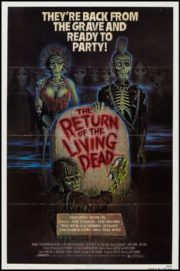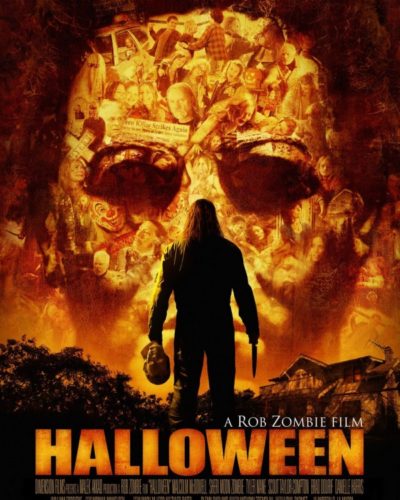A Dark Descent into Madness: Bastard (2015)
“Man’s search for meaning can lead us to the depths of despair.” This haunting quote resonates through the eerie corridors of “Bastard,” a 2015 horror film directed by going against conventions with its raw portrayal of fear and violence. The film follows a desperate man, seeking vengeance for a personal tragedy, who descends into a world where morality blurs with monstrosity. With gritty realism and disturbing visuals, “Bastard” invites viewers into a psyche steeped in anguish, transforming a quest for revenge into a hellish experience.
Crafting an Atmosphere of Dread
From the outset, “Bastard” excels at crafting a fearsome atmosphere, relying on a meticulous blend of suspense and foreboding rather than overt jump scares. The film immerses the audience in a world where tension builds slowly, creating an unsettling environment that presses on the viewer. Rather than focusing on gratuitous violence, the film opts for a psychological approach that emphasizes the emotional struggle of its protagonist, making each shot feel like a descent deeper into despair.
Director, with a keen eye for existential horror, highlights the human condition under duress. The film’s pacing is deliberately measured, allowing viewers to feel the weight of every moment. Along with the atmospheric score, each frame becomes a pulse that quickens as the story progresses. The dread of the unknown is palpable throughout, thriving in silence, highlighted by the haunting echoes of the protagonist’s internal conflict.
The visual style of “Bastard” further enhances its horror elements, employing dim lighting and stark contrasts that mirror the emotional turmoil within. The color palette is muted, with drab tones that serve as a backdrop to the violence unleashed later in the film. The intentional use of shadows creates a sense of surveillance and captures the oppressive atmosphere that saturates his reality. The camera angles, often suggesting voyeurism, add to the sensation of being trapped in a nightmare, making viewers complicit in the horror unfolding onscreen.
The Pulse of Fear: Soundtrack and Sound Effects
The role of sound in “Bastard” is crucial; it weaves through the narrative, amplifying the already charged atmosphere. The sparse and chilling soundtrack sets a haunting backdrop—its minimalist approach enhances the horror intricately. At moments, silence reigns victorious, creating a vacuum that heightens tension. The creaking of doors, the whispering wind, and the echo of footsteps amplify the sensation that something sinister lies just beyond the viewer’s gaze.
Sound effects are often understated yet profoundly impactful. The film utilizes unexpected sounds during tense scenes to elicit sharper reactions; the sudden clang of metal against metal or a distant scream resonates in ways that linger, long after the scene has passed. The juxtaposition of silence and sound keeps viewers on edge, ensuring they remain hyper-aware of their environment, much like the characters who inhabit the screen.
With the absence of an overpowering score in specific moments, the film demonstrates restraint, allowing natural sounds to take center stage. This technique reinforces the theme of fear echoing in the mundane, signifying that horror can dwell in everyday life, not just in monstrous forms.
Delivery of Fear: Performances and Characterization
The performances in “Bastard” are integral to its chilling narrative. The actors embody their roles with unwavering conviction, providing depth to their characters as they grapple with unthinkable situations. The protagonist’s internal suffering and desperation translate through expressive performances, generating empathy even in a tale of revenge and violence.
The film successfully develops its characters, revealing their intricate backstories, allowing audiences to appreciate their motivations and fears. The interactions amongst characters often highlight moments of intense vulnerability and raw emotion, elevating the horror as it roots itself in human experience. This is not merely a tale of monsters but a portrayal of people pushed beyond their limits.
The actress portraying the protagonist’s ally stands out with her expressive range, whether showcasing clever wit or profound despair. This complexity adds dimension to a story often painted in shades of black and white. Her performance invites sympathy while complicating the viewer’s moral compass, challenging their perceptions of right and wrong.
Horrific Dimensions: Identifying the Horror Elements
“Bastard” is a multifaceted horror film that blends psychological terror with elements of body horror, pushing the boundaries of the genre. By tackling the extreme emotional alterations that accompany grief and revenge, it positions itself in the realm of psychological horror. This internal conflict drives the true horror of the film; the unsettling reality that often, the most disturbing monsters are born of our own minds.
Body horror manifests in vividly grotesque scenes that unsettles viewers, serving as a vehicle to illustrate the devastating effects of trauma. The visceral reactions these scenes provoke question the thin lines between humanity and monstrosity. The brutal physicality depicted is paired with psychological distress, making both facets dance uncomfortably close together, crafting a gripping exploration of the human psyche.
The film utilizes shocking visuals not merely for shock’s sake but as an exploration of deeper issues surrounding mortality and revenge. Each horror element contributes to the collective narrative, leading to a climax that is both harrowing and deeply reflective on the consequences of one’s choices.
Methods of Terror: Execution of Frightening Techniques
In “Bastard,” the methods of frightening the audience are particularly effective due to their psychological underpinnings. The film relies less on an abundance of gore, employing shock value through unexpected plot twists and fraught character revelations. The anticipation builds as viewers navigate through moments of dread, making the eventual payoffs feel earned rather than forced.
Techniques such as gradual revelation, where key details emerge at climactic moments, are expertly executed, creating an unnerving sense of inevitability. The use of low-lighting during pivotal scenes contributes to the chilling atmosphere, playing into audience’s feelings of discomfort and unease. For viewers accustomed to straightforward gore, “Bastard” offers a refreshing realignment, highlighting the psychological turmoil surrounding the horror instead.
The tension is maintained even when characters face seemingly mundane challenges, reflecting horror’s presence in everyday life. By anchoring fear within relatable contexts, it expands its horror beyond conventional stakes, adding a lingering sense of dread.
Exploring Themes and Societal Commentary
“Bastard” bravely ventures into the darker regions of human emotion, exploring themes of trauma, loss, and revenge. It delves into how grief can distort one’s moral compass and lead to self-destruction. The protagonist’s journey mirrors the crumbling boundaries of sanity, reflecting the processes of coping with extreme emotional turmoil.
The film’s essence critiques societal expectations of masculinity, displaying how men navigate grief—often through violence. This commentary is vital as it explores broader implications of revenge as a societal condition, questioning who we become when our hearts are broken and how reprisal rarely brings peace.
This deeper analysis enriches the viewer’s experience as it grounds the horror in reality, making it thought-provoking. “Bastard” encourages audiences to reflect upon their fears and the psychological implications embedded within them, creating an unsettling experience that lingers well after the credits roll.
A Double-Edged Sword: The Film’s Effectiveness
Successful with its haunting visuals and emotional depth, “Bastard” truly excels as an engaging horror film. It avoids clichés, opting instead to challenge the conventions of mainstream horror. The film is genuinely frightening not for its shocking revelations alone but for its exploration of deeply human experiences. It allows viewers to confront their fears and reflect on the tragic lengths individuals might go to reclaim a sense of control.
However, its artful ambiguity and slow-burn pacing may not appeal to audiences seeking instant gratification from their horror films. The psychological horror aspect can leave some viewers bewildered, desiring a more traditional narrative structure. Yet those who appreciate narrative complexity within their horror will find “Bastard” to be a profound and unsettling watch.
Who Should Watch: Audience Recommendations
“Bastard” appeals primarily to horror aficionados, particularly those who favor psychological narratives interwoven with emotional depth. Fans of subtle yet effective horror that evokes uncomfortable conversations about grief and loss will likely resonate with this film. Casual viewers might find the pacing and introspective nature a deviation from conventional thrills, hence it may be less suited for those seeking straightforward scares.
If you revel in films that challenge traditional horror narratives while provoking thought, “Bastard” deserves a spot on your watch list. It occupies a unique space within the genre, facilitating discussions that linger long after the final credits.
Comparative Works: Contextual Connections in Horror
When comparing “Bastard” to other contemporary horror films, it shares thematic whispers with works like “Hereditary” and “The Babadook,” which similarly delve into grief and the psychological scars left behind after a tragedy. These films intertwine emotional struggle with horror elements, emphasizing that horror can often emerge from the depths of our minds rather than a monstrous figure.
Additionally, “Bastard” engages in a dialogue with classics like “Psycho” where the exploration of one’s psyche yields horrific consequences. Both films delve into the structural intricacies of the horror genre: a human mind twisted by pain.
A Final Reflection: Evaluative Summary
To sum up, “Bastard” is an exceptional contribution to the horror genre that manages to evoke true fright by exploring the human psyche’s darker alleys. Its strengths lie in its atmospheric storytelling, emotional performances, and underlying themes that challenge viewers to contemplate broader societal implications.
Despite potential drawbacks—such as pacing that may seem slow to some viewers—the film’s mastery in psychological horror makes it a powerful experience. It successfully blurs the lines of humanity, frailty, and monstrosity, immersing viewers in a narrative rich in both horror and tragedy.
For those willing to explore the complexities of grief through a horror lens, “Bastard” offers a unique and impactful experience that lingers, ensuring its place in the conversation of modern horror cinema.
**Trigger Warnings:** Graphic violence and themes of grief may be present, making “Bastard” a film that may not suit all viewers. Proceed with caution if sensitive to such content.




